
A hárem bábája
¥74.74
Válaszok a nap mint nap el?forduló gyakorlati iratkezelési kérdésekre! Hogyan feleljünk meg a jogszabályoknak? Mik azok a SZE?SZ-?k és milyen el?ny?kkel jár az alkalmazásuk? Mi a kül?nbség a digitális és az elektronikus aláírás k?z?tt? Mikor javasolt a vonalkódos digitalizálás használata? Mire kell figyelnem egy iratkezel? rendszer bevezetésénél? ?Az egységes iratkezelés k?zelmúltban bet?lt?tt 10. évfordulója az ágazat felel?s vezet?it és munkatársait is visszatekintésre, ?sszegzésre és a j?v?re irányuló útkeresésre ?szt?nzi. Remek segédeszk?z ehhez e kiadvány, ami professzionális módon foglalja ?ssze az iratkezelés napjainkban aktuális témáit, problémáit. Bízom benne, hogy mindennapi munkájuk során az iratkezel?i állomány, az iratkezelésért felel?s szervezeti egységek vezet?i gyakran kezükbe veszik majd és ?sorvezet?ként” alkalmazzák. Kovács Rezs? – Belügyminisztérium, Iratkezelési és Adatvédelmi F?osztály, f?osztályvezet? ?Lehet-e izgalmasabb annál, mint amikor kit?n? szakemberek vallanak munkájukról, annak jogi és természetes k?rnyezetér?l, a fejl?dés irányairól? A válogatott fejezetek az iratkezelés-, az elektronizálás- és az elektronikus iratkezelés ábécéjének foglalatát adják olyan szerz?k tollából, akik maguk is jártasak a témában és végigjárták annak útveszt?it.” Surányiné dr. Temesi Mária - K?zigazgatási és Elektronikus K?zszolgáltatások K?zponti Hivatala, Kormányzati K?zponti ?rkeztet? F?osztály, f?osztályvezet?

A h?séges férfi?: Boldogságnovellák
¥50.36
Ha kíváncsi az olyan témákra, mint például hogy miként lehet felt?rni egy jelszót, vagy egy webhelyet, esetleg hogyan lehet lehallgatni bárki kommunikációját egy nyílt wifi hálózaton, akkor ez a k?nyv ?nnek szól. Sokan azt hiszik, hogy ezek ?rd?ng?s dolgok, pedig egyáltalán nem azok. ?ppen ezért fontos, hogy védekezni is kell ellenük, ami szintén nem bonyolult, csak egy kis odafigyelésre van szükség. K?nyvünk mindkét oldalt megmutatja, elrettentésképpen a lehet?ségeket, okulásként a védekezési módokat. Ha ?n azt hiszi, hogy biztonságban van, hiszen nem csinál semmi illegálisat és még vírusirtó is van a gépén, akkor nagyon téved! Teljesk?r? védelem ugyanis nem létezik! Ha elolvassa ezt a k?nyvet, meg fog d?bbenni, hogy milyen sok támadási lehet?ség van adataink ellen. A k?nyv, azon túl, hogy ismerteti, mit jelentenek az információbiztonsági szakkifejezések olyan témákkal foglalkozik, mint hogy milyen eszk?z?k támadhatók és hogyan, hogyan dolgozik egy hacker, mekkora kockázatot jelent az emberi tényez? (social engineering), stb. Kitér a jelszavak biztonságára, a kül?nféle hackeléshez használható programok és azok kezelésére, a billenty?zetnaplózási lehet?ségekre, a hálózatok és weboldalak támadására és felt?résére, az online bankolási kockázatokra, a titkosítási módszerekre, illetve hogy mit érdemes tenni a biztonságos adattárolás érdekében.Természetesen senkit sem akarunk illegális tevékenységre buzdítani, célunk sokkal inkább azt megmutatni, hogy mekkora veszélynek vagyunk kitéve, ezáltal a támadási és védekezési lehet?ségek bemutatásával ?szt?n?zzük az embereket a biztonságosabb számítógéphasználatra.

16 conferin?e despre traum?
¥81.67
Mivel az informatika egyre inkább átsz?vi életünket, a szoftverek min?ségével kapcsolatos elvárások egyre magasabbak. Egy szoftver el?állítása azonban nem csak programozásból áll, és a programozóktól sem lehet elvárni emberfeletti képességeket, a megrendel? el nem mondott elképzelésének t?kéletesen megfelel?, teljesen hibamentes munkát, mivel csak az nem hibázik, aki nem is dolgozik. Az informatika világában a szoftvertesztel?k azok, akik a szoftverek min?ségéért dolgoznak. A szoftvertesztel?k?n óriási felel?sség nyugszik és folyamatosan elvárások kereszttüzében kell helytállniuk. Mégis, szoftvertesztelés nélkül a legt?bb szoftver el sem jutna a felhasználókig, vagy ha igen, akkor megjelenésük botrányokkal, valamint óriási anyagi és erk?lcsi veszteségekkel járna együtt, a rengeteg fel nem tárt programhiba miatt. Szoftvertesztelésre és tesztel?kre ezért mindenképp szükség van. K?nyvünk a professzionális szoftvertesztelés alapjaival ismerteti meg az olvasót, számos gyakorlati példával f?szerezve, mell?zve a száraz, pusztán technikai megk?zelítés? leírásokat, kezdve a szoftvertesztelés általános bemutatásától, a fogalmak ismertetését?l, majd részleteiben tárgyalva a szoftvertesztelést és annak helyét a fejlesztési folyamatokban. Segítségével jó adag gyakorlati ismerettel vértezhetjük fel magunkat, melynek során valódi, a tesztelést támogató alkalmazásokat ismerhetünk meg, biztos alapot nyújtva a szoftvertesztelésben elhelyezked? leend? és gyakorló szakembereknek a mindennapi munkájukhoz. A szoftverteszteléssel most ismerked? szakembereknek és laikusoknak kimondottan hasznos lehet ez a k?nyv, de fejleszt?k és cégvezet?k számára is tartogat hasznos információkat, melyek segítségével bevezethetik, illetve hatékonyabbá tehetik a szoftvertesztelést munkájuk során.

Unreal Engine 4 Shaders and Effects Cookbook
¥70.84
Build optimized, efficient, and real-time applications that are production-ready using Unreal Engine's Material Editor Key Features * Create stunning visual effects for 3D games and high-quality graphics * Design efficient Shaders for mobile platforms without sacrificing their realism * Discover what goes into the structure of Shaders and why lighting works the way it does Book Description Unreal Engine 4 is a powerful game engine, one which has seen a recent boost in widespread adoption thanks to its ease of use and the powerful rendering pipeline that it packs. Seeing as how it's relatively easy to create stunning presentations and visuals, Unreal has quickly become a strong contender in industries where this kind of software had been previously denied entry. With that in mind, this book aims to help you get the most out of Unreal Engine 4 - from creating awe-inspiring graphics to delivering optimized experiences to your users. This is possible thanks to a mixture of hands-on experience with real materials and the theory behind them. You will immediately know how to create that material that you want to display, and you'll also end up with the knowledge that will let you know how to control it. All of this will be done without losing sight of two key components of any real-time application - optimization, and efficiency. The materials that you create will be light and efficient, and they will vary depending on your target platform. You'll know which techniques can be used in any kind of device and which ones should be kept to high-end machines, giving you the confidence to tackle any material-related task that you can imagine. Hop onboard and discover how! What you will learn * Master Unreal Engine's rendering pipeline for developing real-time graphics * Use physically based rendering (PBR) for building materials and lighting solutions * Build optimized materials for games targeting multiple platforms * Understand Unreal Engine's node and functions for creating desirable effects * Design and build production-ready shaders * Explore Unreal Engine's Material Editor for building complex materials and textures Who this book is for This book is for developers who want to create their first Shaders in Unreal Engine 4 or wish to take their game to a whole new level by adding professional post-processing effects. A solid understanding of Unreal is required to get the most from this book.
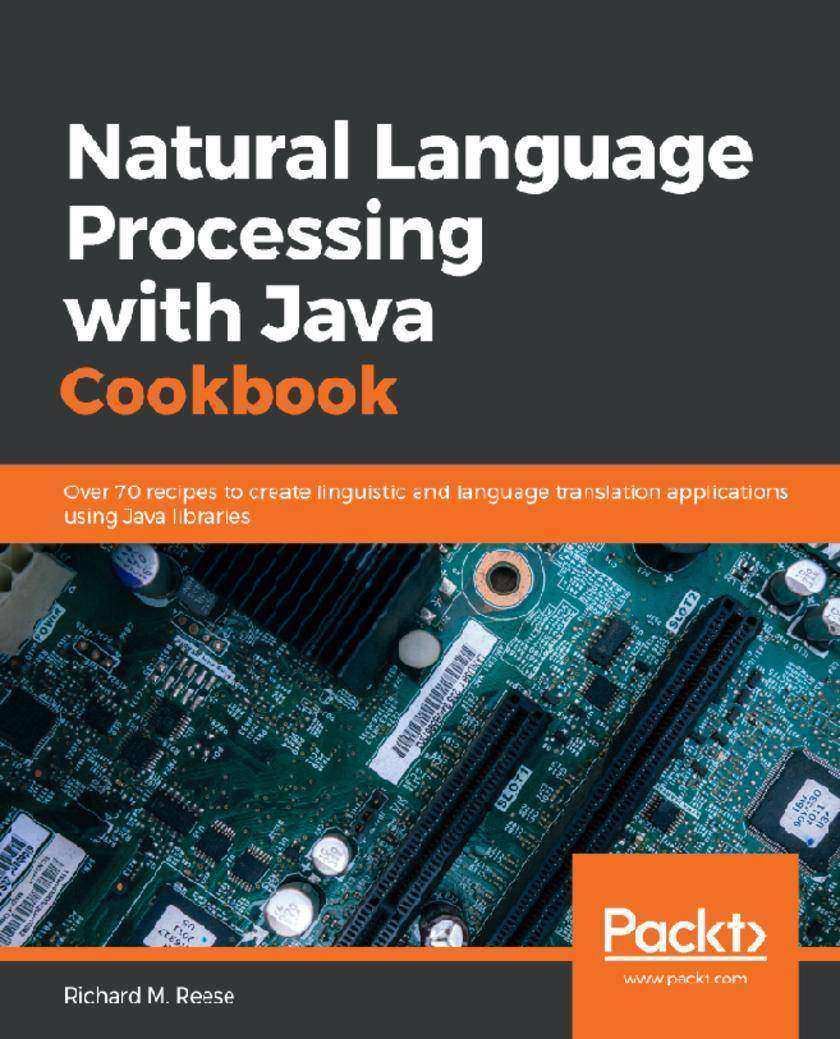
Natural Language Processing with Java Cookbook
¥70.84
A problem-solution guide to encounter various NLP tasks utilizing Java open source libraries and cloud-based solutions Key Features * Perform simple-to-complex NLP text processing tasks using modern Java libraries Extract relationships between different text complexities using a problem-solution approach * Utilize cloud-based APIs to perform machine translation operations Book Description Natural Language Processing (NLP) has become one of the prime technologies for processing very large amounts of unstructured data from disparate information sources. This book includes a wide set of recipes and quick methods that solve challenges in text syntax, semantics, and speech tasks. At the beginning of the book, you'll learn important NLP techniques, such as identifying parts of speech, tagging words, and analyzing word semantics. You will learn how to perform lexical analysis and use machine learning techniques to speed up NLP operations. With independent recipes, you will explore techniques for customizing your existing NLP engines/models using Java libraries such as OpenNLP and the Stanford NLP library. You will also learn how to use NLP processing features from cloud-based sources, including Google and Amazon’s AWS. You will master core tasks, such as stemming, lemmatization, part-of-speech tagging, and named entity recognition. You will also learn about sentiment analysis, semantic text similarity, language identification, machine translation, and text summarization. By the end of this book, you will be ready to become a professional NLP expert using a problem-solution approach to analyze any sort of text, sentences, or semantic words. What you will learn * Explore how to use tokenizers in NLP processing * Implement NLP techniques in machine learning and deep learning applications * Identify sentences within the text and learn how to train specialized NER models * Learn how to classify documents and perform sentiment analysis * Find semantic similarities between text elements and extract text from a variety of sources * Preprocess text from a variety of data sources * Learn how to identify and translate languages Who this book is for This book is for data scientists, NLP engineers, and machine learning developers who want to perform their work on linguistic applications faster with the use of popular libraries on JVM machines. This book will help you build real-world NLP applications using a recipe-based approach. Prior knowledge of Natural Language Processing basics and Java programming is expected.
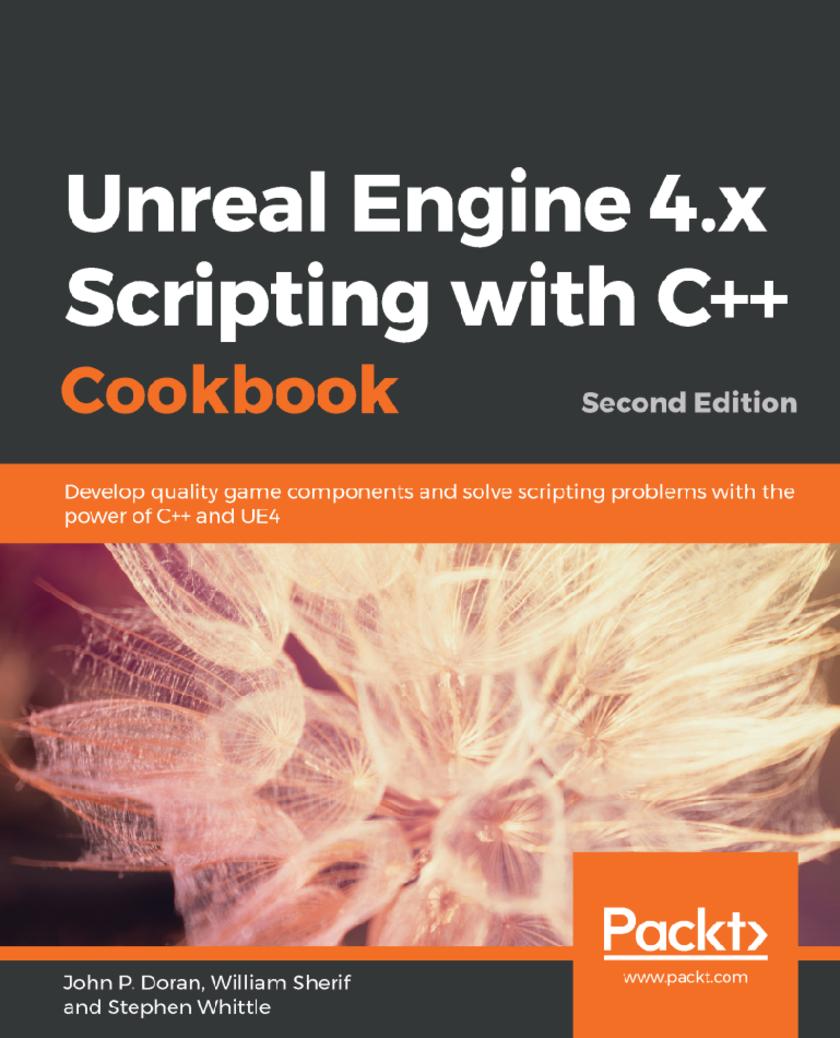
Unreal Engine 4.x Scripting with C++ Cookbook
¥73.02
Write efficient, reusable scripts to build custom characters, game environments, and control enemy AI Key Features * Build captivating multiplayer games using Unreal Engine and C++ * Incorporate existing C++ libraries into your game to add extra functionality such as hardware integration * Practical solutions for memory management, error handling, inputs, and collision for your game codebase Book Description Unreal Engine 4 (UE4) is a popular and award-winning game engine that powers some of the most popular games. A truly powerful tool for game development, there has never been a better time to use it for both commercial and independent projects. With more than 100 recipes, this book shows how to unleash the power of C++ while developing games with Unreal Engine. This book takes you on a journey to jumpstart your C++ and UE4 development skills. You will start off by setting up UE4 for C++ development and learn how to work with Visual Studio, a popular code editor. You will learn how to create C++ classes and structs the Unreal way. This will be followed by exploring memory management, smart pointers, and debugging your code. You will then learn how to make your own Actors and Components through code and how to handle input and collision events. You will also get exposure to many elements of game development including creating user interfaces, artificial intelligence, and writing code with networked play in mind. You will also learn how to add on to the Unreal Editor itself. With a range of task-oriented recipes, this book provides actionable information about writing code for games with UE4 using C++. By the end of the book, you will be empowered to become a top-notch developer with UE4 using C++ as your scripting language! What you will learn * Create C++ classes and structs that integrate well with UE4 and the Blueprints editor * Discover how to work with various APIs that Unreal Engine already contains * Utilize advanced concepts such as events, delegates, and interfaces in your UE4 projects * Build user interfaces using Canvas and UMG through C++ * Extend the Unreal Editor by creating custom windows and editors * Implement AI tasks and services using C++, Blackboard, and Behavior Trees * Write C++ code with networking in mind and replicate properties and functions Who this book is for If you are really passionate game developer looking for solutions to common scripting problems, then this is the book for you. Understanding of the fundamentals of game design and C++ is expected to get the most from this book.
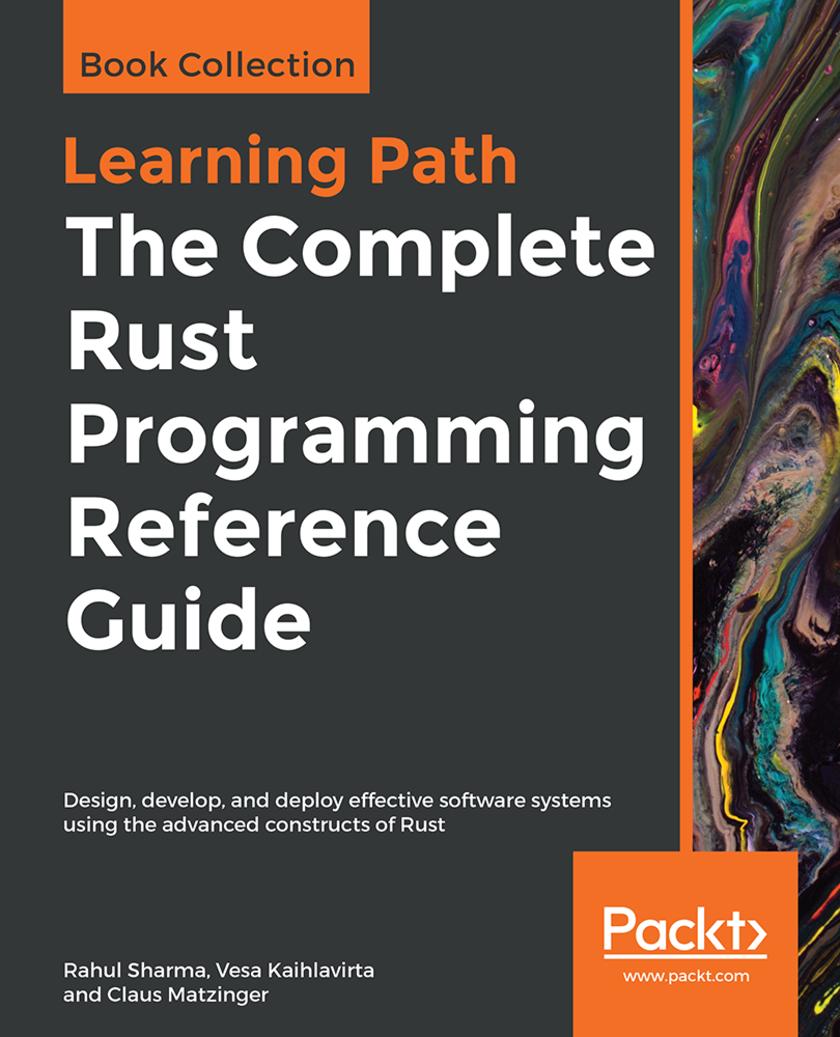
The Complete Rust Programming Reference Guide
¥88.28
Design and implement professional-level programs by leveraging modern data structures and algorithms in Rust Key Features * Improve your productivity by writing more simple and easy code in Rust * Discover the functional and reactive implementations of traditional data structures * Delve into new domains of Rust, including WebAssembly, networking, and command-line tools Book Description Rust is a powerful language with a rare combination of safety, speed, and zero-cost abstractions. This Learning Path is filled with clear and simple explanations of its features along with real-world examples, demonstrating how you can build robust, scalable, and reliable programs. You’ll get started with an introduction to Rust data structures, algorithms, and essential language constructs. Next, you will understand how to store data using linked lists, arrays, stacks, and queues. You’ll also learn to implement sorting and searching algorithms, such as Brute Force algorithms, Greedy algorithms, Dynamic Programming, and Backtracking. As you progress, you’ll pick up on using Rust for systems programming, network programming, and the web. You’ll then move on to discover a variety of techniques, right from writing memory-safe code, to building idiomatic Rust libraries, and even advanced macros. By the end of this Learning Path, you’ll be able to implement Rust for enterprise projects, writing better tests and documentation, designing for performance, and creating idiomatic Rust code. This Learning Path includes content from the following Packt products: * Mastering Rust - Second Edition by Rahul Sharma and Vesa Kaihlavirta * Hands-On Data Structures and Algorithms with Rust by Claus Matzinger What you will learn * Design and implement complex data structures in Rust * Create and use well-tested and reusable components with Rust * Understand the basics of multithreaded programming and advanced algorithm design * Explore application profiling based on benchmarking and testing * Study and apply best practices and strategies in error handling * Create efficient web applications with the Actix-web framework * Use Diesel for type-safe database interactions in your web application Who this book is for If you are already familiar with an imperative language and now want to progress from being a beginner to an intermediate-level Rust programmer, this Learning Path is for you. Developers who are already familiar with Rust and want to delve deeper into the essential data structures and algorithms in Rust will also find this Learning Path useful.
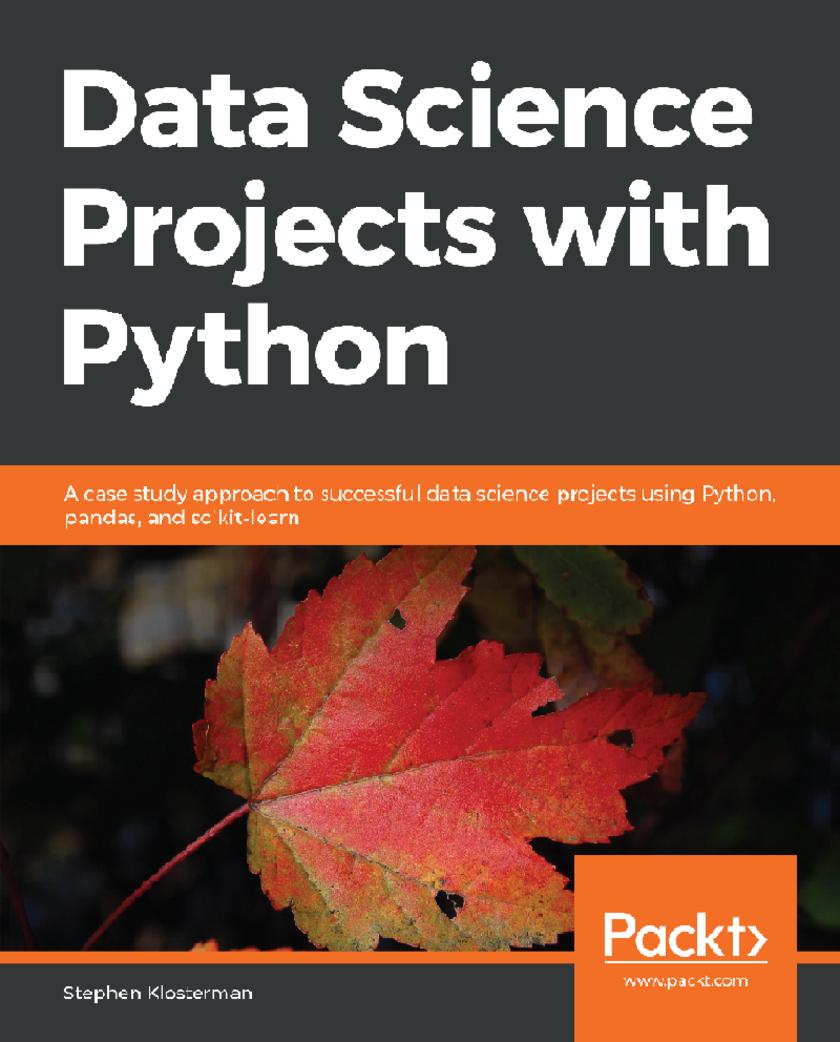
Data Science Projects with Python
¥62.12
Gain hands-on experience with industry-standard data analysis and machine learning tools in Python Key Features * Learn techniques to use data to identify the exact problem to be solved * Visualize data using different graphs * Identify how to select an appropriate algorithm for data extraction Book Description Data Science Projects with Python is designed to give you practical guidance on industry-standard data analysis and machine learning tools in Python, with the help of realistic data. The book will help you understand how you can use pandas and Matplotlib to critically examine a dataset with summary statistics and graphs, and extract the insights you seek to derive. You will continue to build on your knowledge as you learn how to prepare data and feed it to machine learning algorithms, such as regularized logistic regression and random forest, using the scikit-learn package. You’ll discover how to tune the algorithms to provide the best predictions on new and, unseen data. As you delve into later chapters, you’ll be able to understand the working and output of these algorithms and gain insight into not only the predictive capabilities of the models but also their reasons for making these predictions. By the end of this book, you will have the skills you need to confidently use various machine learning algorithms to perform detailed data analysis and extract meaningful insights from unstructured data. What you will learn * Install the required packages to set up a data science coding environment * Load data into a Jupyter Notebook running Python * Use Matplotlib to create data visualizations * Fit a model using scikit-learn * Use lasso and ridge regression to reduce overfitting * Fit and tune a random forest model and compare performance with logistic regression * Create visuals using the output of the Jupyter Notebook Who this book is for If you are a data analyst, data scientist, or a business analyst who wants to get started with using Python and machine learning techniques to analyze data and predict outcomes, this book is for you. Basic knowledge of computer programming and data analytics is a must. Familiarity with mathematical concepts such as algebra and basic statistics will be useful.
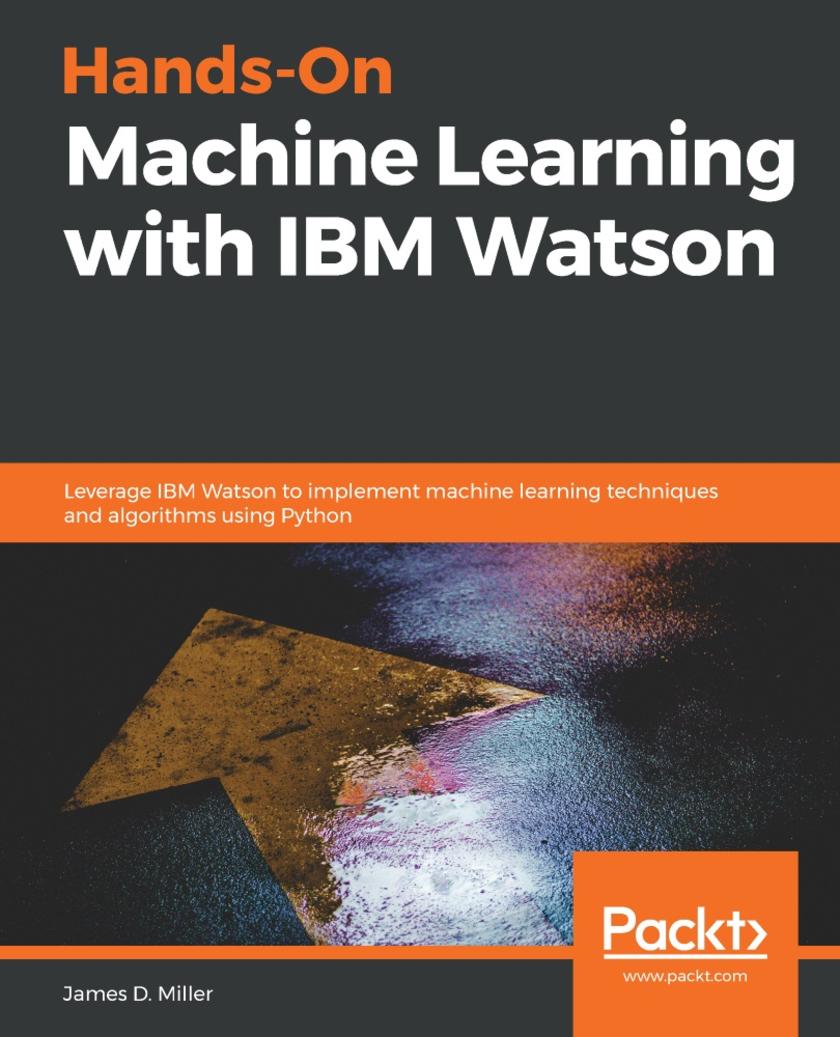
Hands-On Machine Learning with IBM Watson
¥73.02
Learn how to build complete machine learning systems with IBM Cloud and Watson Machine learning services Key Features * Implement data science and machine learning techniques to draw insights from real-world data * Understand what IBM Cloud platform can help you to implement cognitive insights within applications * Understand the role of data representation and feature extraction in any machine learning system Book Description IBM Cloud is a collection of cloud computing services for data analytics using machine learning and artificial intelligence (AI). This book is a complete guide to help you become well versed with machine learning on the IBM Cloud using Python. Hands-On Machine Learning with IBM Watson starts with supervised and unsupervised machine learning concepts, in addition to providing you with an overview of IBM Cloud and Watson Machine Learning. You'll gain insights into running various techniques, such as K-means clustering, K-nearest neighbor (KNN), and time series prediction in IBM Cloud with real-world examples. The book will then help you delve into creating a Spark pipeline in Watson Studio. You will also be guided through deep learning and neural network principles on the IBM Cloud using TensorFlow. With the help of NLP techniques, you can then brush up on building a chatbot. In later chapters, you will cover three powerful case studies, including the facial expression classification platform, the automated classification of lithofacies, and the multi-biometric identity authentication platform, helping you to become well versed with these methodologies. By the end of this book, you will be ready to build efficient machine learning solutions on the IBM Cloud and draw insights from the data at hand using real-world examples. What you will learn * Understand key characteristics of IBM machine learning services * Run supervised and unsupervised techniques in the cloud * Understand how to create a Spark pipeline in Watson Studio * Implement deep learning and neural networks on the IBM Cloud with TensorFlow * Create a complete, cloud-based facial expression classification solution * Use biometric traits to build a cloud-based human identification system Who this book is for This beginner-level book is for data scientists and machine learning engineers who want to get started with IBM Cloud and its machine learning services using practical examples. Basic knowledge of Python and some understanding of machine learning will be useful.
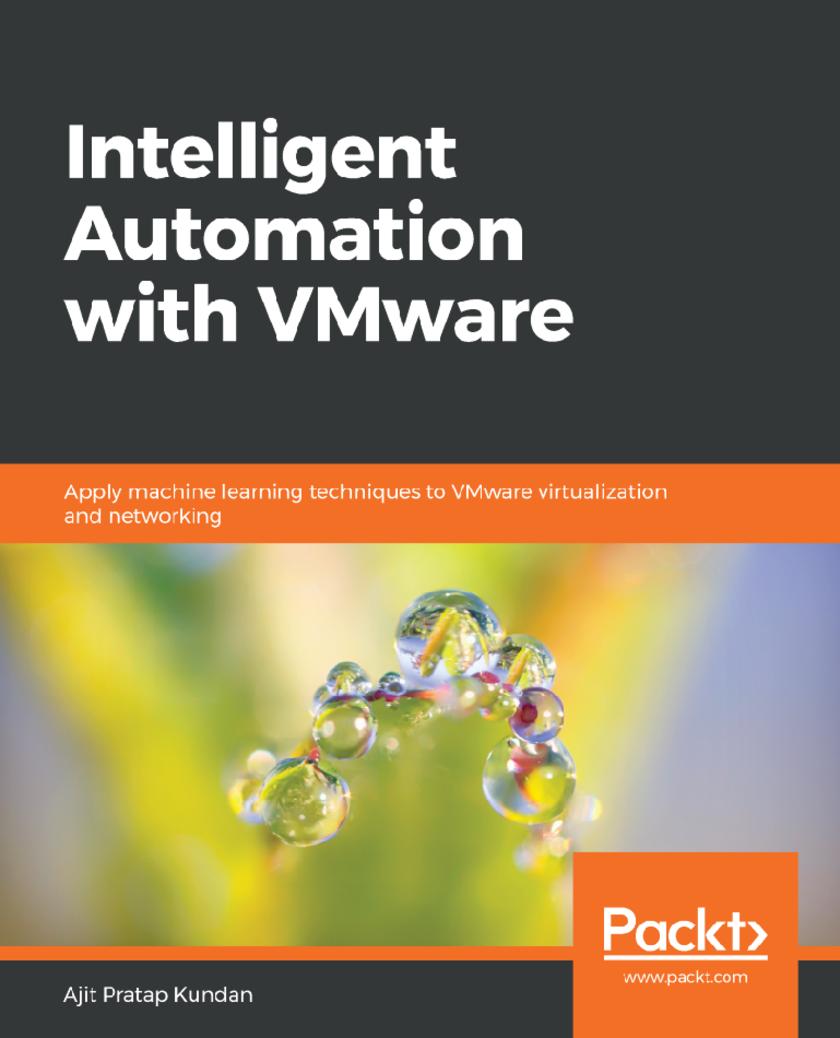
Intelligent Automation with VMware
¥73.02
Use self-driven data centers to reduce management complexity by deploying Infrastructure as Code to gain value from investments. Key Features * Add smart capabilities in VMware Workspace ONE to deliver customer insights and improve overall security * Optimize your HPC and big data infrastructure with the help of machine learning * Automate your VMware data center operations with machine learning Book Description This book presents an introductory perspective on how machine learning plays an important role in a VMware environment. It offers a basic understanding of how to leverage machine learning primitives, along with a deeper look into integration with the VMware tools used for automation today. This book begins by highlighting how VMware addresses business issues related to its workforce, customers, and partners with emerging technologies such as machine learning to create new, intelligence-driven, end user experiences. You will learn how to apply machine learning techniques incorporated in VMware solutions for data center operations. You will go through management toolsets with a focus on machine learning techniques. At the end of the book, you will learn how the new vSphere Scale-Out edition can be used to ensure that HPC, big data performance, and other requirements can be met (either through development or by fine-tuning guidelines) with mainstream products. What you will learn * Orchestrate on-demand deployments based on defined policies * Automate away common problems and make life easier by reducing errors * Deliver services to end users rather than to virtual machines * Reduce rework in a multi-layered scalable manner in any cloud * Explore the centralized life cycle management of hybrid clouds * Use common code so you can run it across any cloud Who this book is for This book is intended for those planning, designing, and implementing the virtualization/cloud components of the Software-Defined Data Center foundational infrastructure. It helps users to put intelligence in their automation tasks to get self driving data center. It is assumed that the reader has knowledge of, and some familiarity with, virtualization concepts and related topics, including storage, security, and networking.
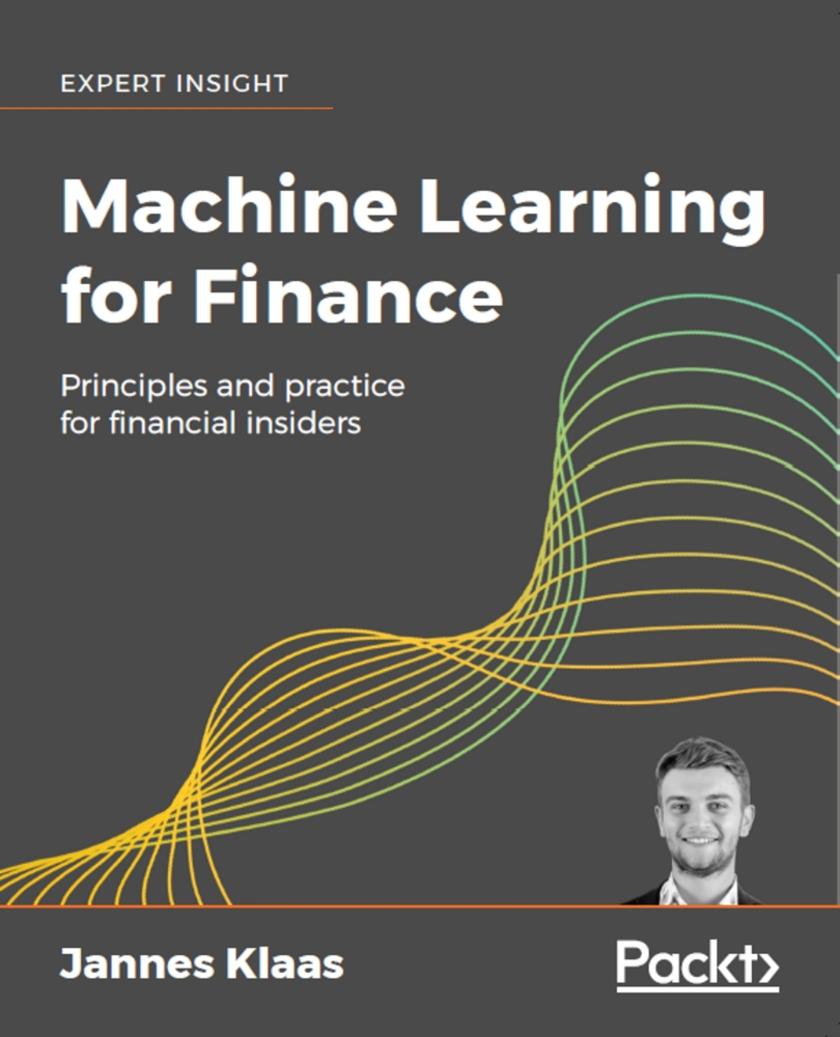
Machine Learning for Finance
¥70.84
Plan and build useful machine learning systems for financial services, with full working Python code Key Features * Build machine learning systems that will be useful across the financial services industry * Discover how machine learning can solve finance industry challenges * Gain the machine learning insights and skills fintech companies value most Book Description Machine learning skills are essential for anybody working in financial data analysis. Machine Learning for Finance shows you how to build machine learning models for use in financial services organizations. It shows you how to work with all the key machine learning models, from simple regression to advanced neural networks. You will see how to use machine learning to automate manual tasks, identify and address systemic bias, and find new insights and patterns hidden in available data. Machine Learning for Finance encourages and equips you to find new ways to use data to serve an organization’s business goals. Broad in scope yet deeply practical in approach, Machine Learning for Finance will help you to apply machine learning in all parts of a financial organization’s infrastructure. If you work or plan to work in fintech, and want to gain one of the most valuable skills in the sector today, this book is for you. What you will learn * Practical machine learning for the finance sector * Build machine learning systems that support the goals of financial organizations * Think creatively about problems and how machine learning can solve them * Identify and reduce sources of bias from machine learning models * Apply machine learning to structured data, natural language, photographs, and written text related to finance * Use machine learning to detect fraud, forecast financial trends, analyze customer sentiments, and more * Implement heuristic baselines, time series, generative models, and reinforcement learning in Python, scikit-learn, Keras, and TensorFlow Who this book is for Machine Learning for Finance is for financial professionals who want to develop and apply machine learning skills, and for students entering the field. You should be comfortable with Python and the basic data science stack, such as NumPy, pandas, and Matplotlib, to get the most out of this book.
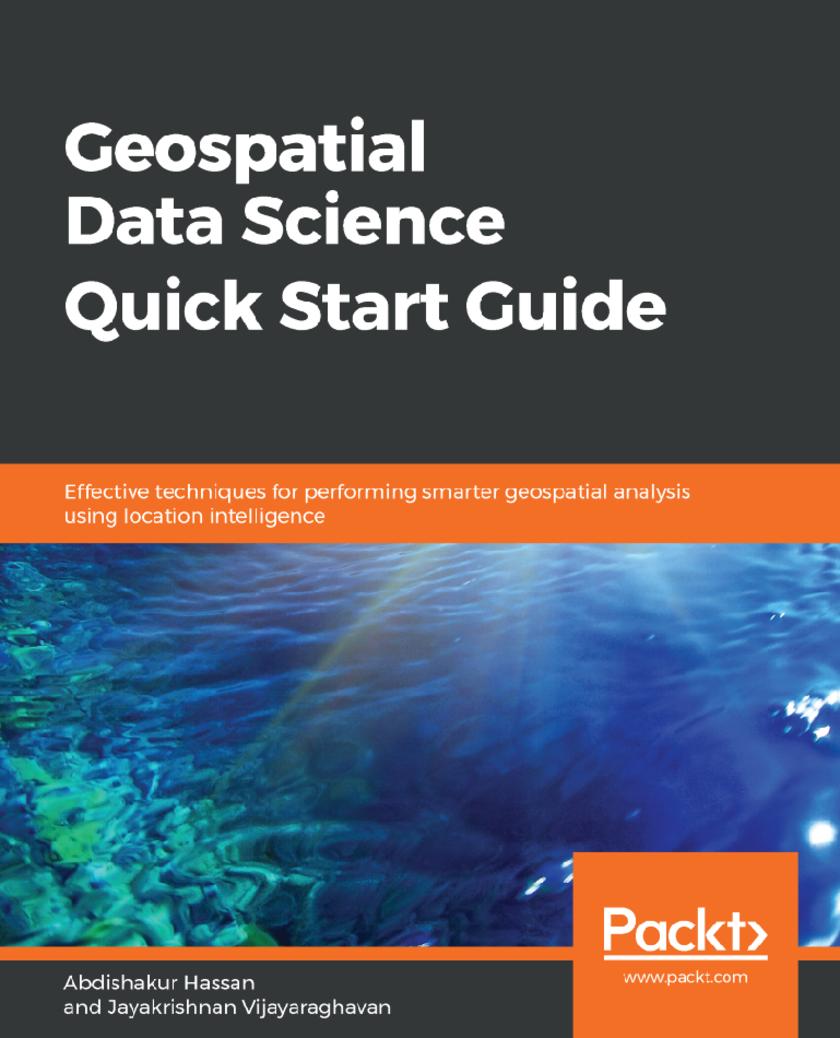
Geospatial Data Science Quick Start Guide
¥53.40
Discover the power of location data to build effective, intelligent data models with Geospatial ecosystems Key Features * Manipulate location-based data and create intelligent geospatial data models * Build effective location recommendation systems used by popular companies such as Uber * A hands-on guide to help you consume spatial data and parallelize GIS operations effectively Book Description Data scientists, who have access to vast data streams, are a bit myopic when it comes to intrinsic and extrinsic location-based data and are missing out on the intelligence it can provide to their models. This book demonstrates effective techniques for using the power of data science and geospatial intelligence to build effective, intelligent data models that make use of location-based data to give useful predictions and analyses. This book begins with a quick overview of the fundamentals of location-based data and how techniques such as Exploratory Data Analysis can be applied to it. We then delve into spatial operations such as computing distances, areas, extents, centroids, buffer polygons, intersecting geometries, geocoding, and more, which adds additional context to location data. Moving ahead, you will learn how to quickly build and deploy a geo-fencing system using Python. Lastly, you will learn how to leverage geospatial analysis techniques in popular recommendation systems such as collaborative filtering and location-based recommendations, and more. By the end of the book, you will be a rockstar when it comes to performing geospatial analysis with ease. What you will learn * Learn how companies now use location data * Set up your Python environment and install Python geospatial packages * Visualize spatial data as graphs * Extract geometry from spatial data * Perform spatial regression from scratch * Build web applications which dynamically references geospatial data Who this book is for Data Scientists who would like to leverage location-based data and want to use location-based intelligence in their data models will find this book useful. This book is also for GIS developers who wish to incorporate data analysis in their projects. Knowledge of Python programming and some basic understanding of data analysis are all you need to get the most out of this book.
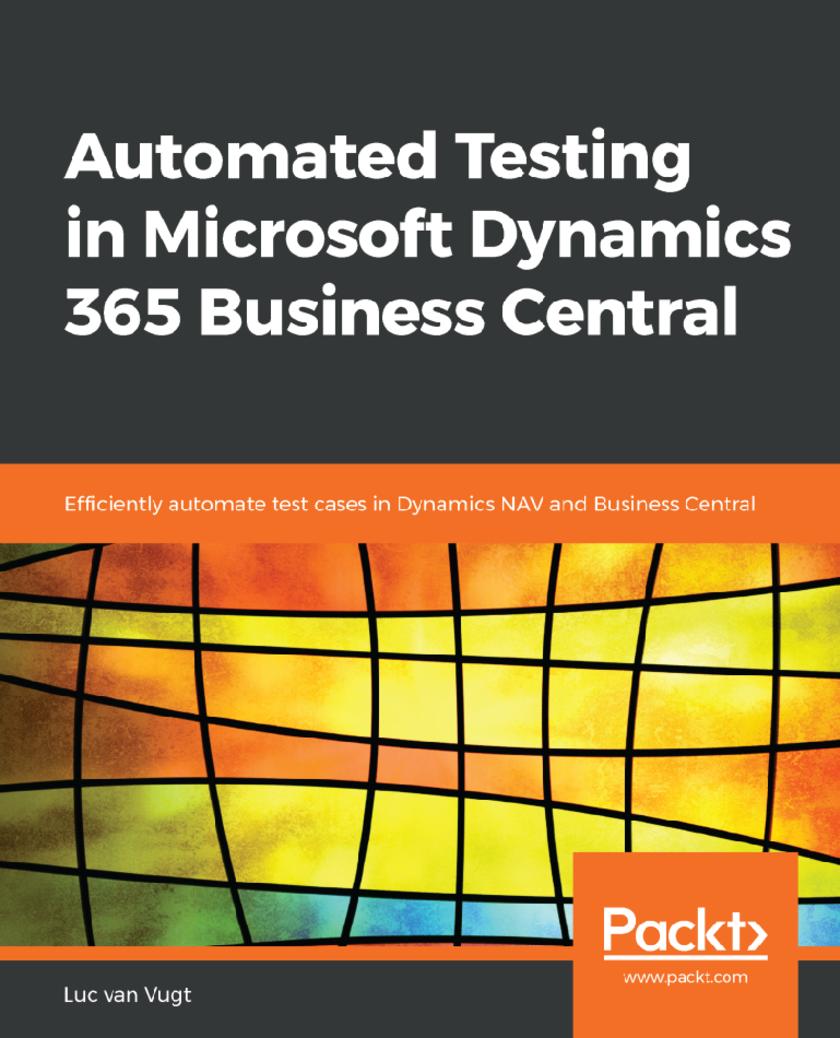
Automated Testing in Microsoft Dynamics 365 Business Central
¥44.68
Learn how to write automated tests for Dynamics 365 Business Central and see how to implement it in your daily work Key Features * Leverage automated testing to advance over traditional manual testing methods * Write, design, and implement automated tests * Explore various testing frameworks and tools compatible with Microsoft Dynamics 365 Business Central Book Description Dynamics 365 Business Central is the new cloud-based SaaS ERP proposition from Microsoft. It’s not as simple as it used to be way back when it was called Navigator, Navision Financials, or Microsoft Business Solutions-Navision. Our development practices are becoming more formal, and with this, the call for test automation is pressing on us. This book will teach you to leverage testing tools available with Dynamics 365 Business Central to perform automated testing. We’ll begin with a quick introduction to automated testing, followed by an overview of test automation in Dynamics 365 Business Central. Then you’ll learn to design and build automated tests and we’ll go through some efficient methods to get from requirements to application and testing code. Lastly, you’ll learn to incorporate your own and Microsoft tests into your daily development practice. By the end of the book, you’ll be able to write your own automated tests for Dynamics 365 Business Central. What you will learn * Understand what automated tests are, and when and why to use them * Explore the five pillars of the Testability Framework of Business Central * Design and write automated tests for Business Central * Make use of standard automated tests and their helper libraries * Integrate automated tests into your development practice Who this book is for This book is for consultants, testers, developers, and development managers working with Microsoft Dynamics NAV and Business Central. Being a book on automated testing techniques, it also caters to both functional and technical development teams.
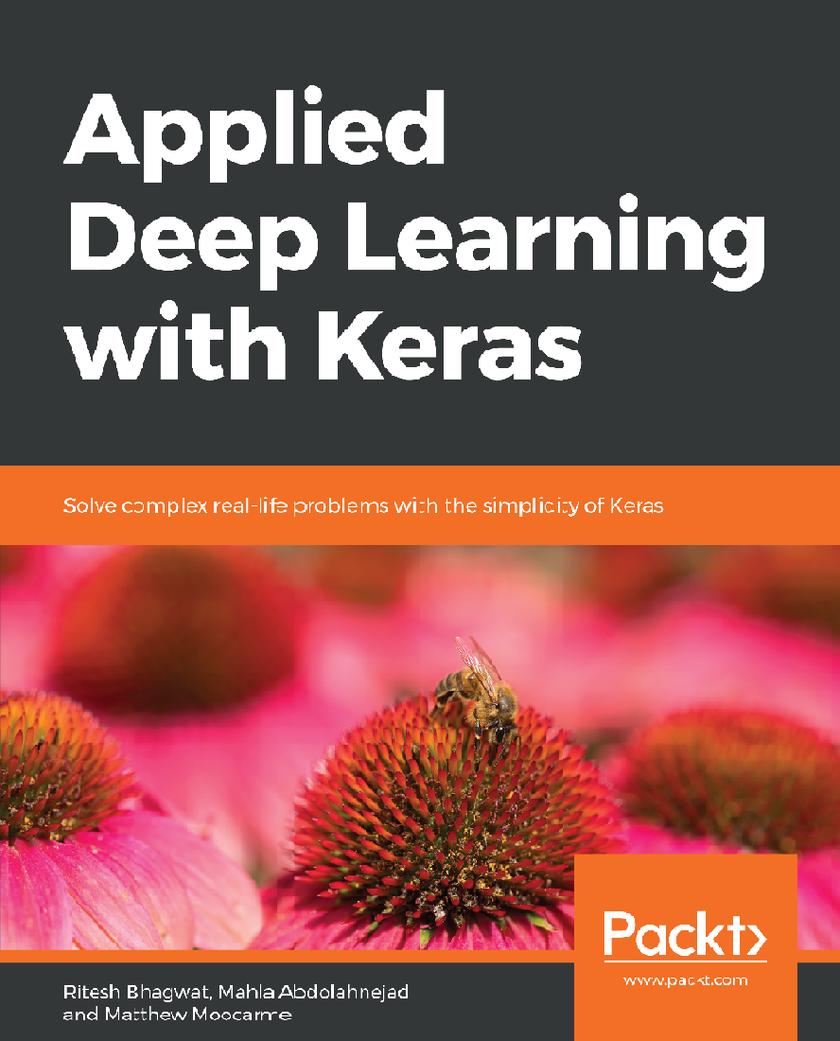
Applied Deep Learning with Keras
¥62.12
Take your neural networks to a whole new level with the simplicity and modularity of Keras, the most commonly used high-level neural networks API. Key Features * Solve complex machine learning problems with precision * Evaluate, tweak, and improve your deep learning models and solutions * Use different types of neural networks to solve real-world problems Book Description Though designing neural networks is a sought-after skill, it is not easy to master. With Keras, you can apply complex machine learning algorithms with minimum code. Applied Deep Learning with Keras starts by taking you through the basics of machine learning and Python all the way to gaining an in-depth understanding of applying Keras to develop efficient deep learning solutions. To help you grasp the difference between machine and deep learning, the book guides you on how to build a logistic regression model, first with scikit-learn and then with Keras. You will delve into Keras and its many models by creating prediction models for various real-world scenarios, such as disease prediction and customer churning. You’ll gain knowledge on how to evaluate, optimize, and improve your models to achieve maximum information. Next, you’ll learn to evaluate your model by cross-validating it using Keras Wrapper and scikit-learn. Following this, you’ll proceed to understand how to apply L1, L2, and dropout regularization techniques to improve the accuracy of your model. To help maintain accuracy, you’ll get to grips with applying techniques including null accuracy, precision, and AUC-ROC score techniques for fine tuning your model. By the end of this book, you will have the skills you need to use Keras when building high-level deep neural networks. What you will learn * Understand the difference between single-layer and multi-layer neural network models * Use Keras to build simple logistic regression models, deep neural networks, recurrent neural networks, and convolutional neural networks * Apply L1, L2, and dropout regularization to improve the accuracy of your model * Implement cross-validate using Keras wrappers with scikit-learn * Understand the limitations of model accuracy Who this book is for If you have basic knowledge of data science and machine learning and want to develop your skills and learn about artificial neural networks and deep learning, you will find this book useful. Prior experience of Python programming and experience with statistics and logistic regression will help you get the most out of this book. Although not necessary, some familiarity with the scikit-learn library will be an added bonus.
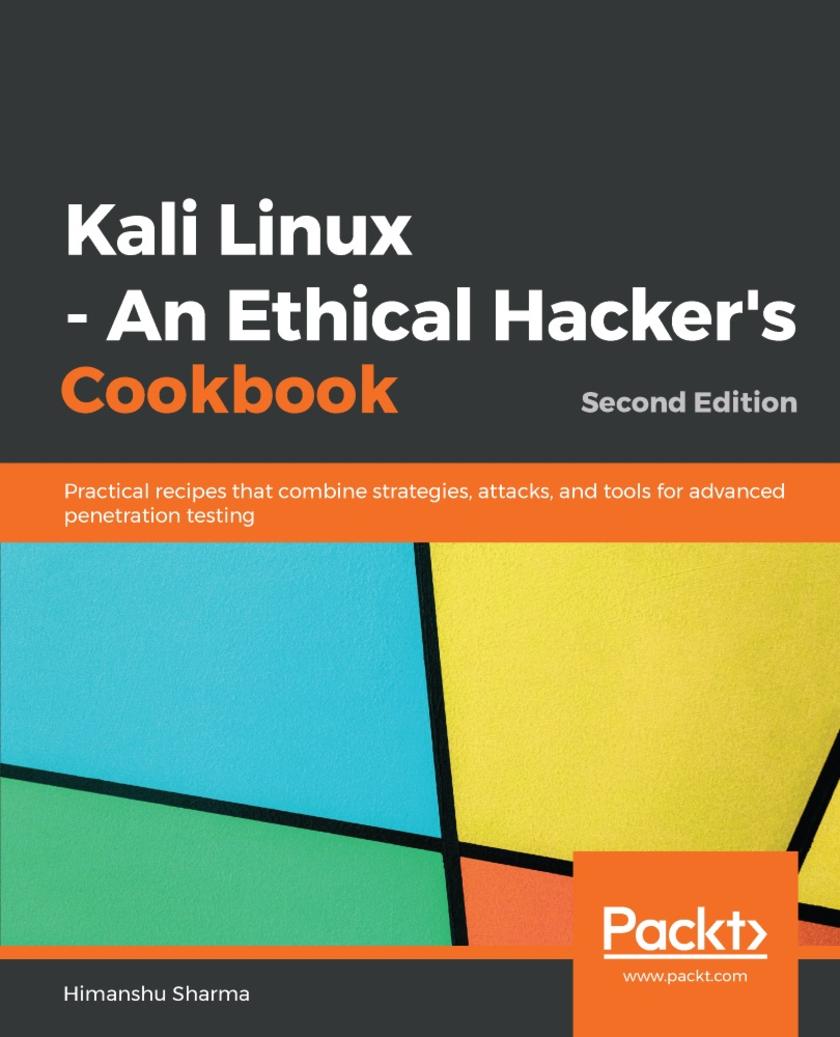
Kali Linux - An Ethical Hacker's Cookbook
¥81.74
Discover end-to-end penetration testing solutions to enhance your ethical hacking skills Key Features * Practical recipes to conduct effective penetration testing using the latest version of Kali Linux * Leverage tools like Metasploit, Wireshark, Nmap, and more to detect vulnerabilities with ease * Confidently perform networking and application attacks using task-oriented recipes Book Description Many organizations have been affected by recent cyber events. At the current rate of hacking, it has become more important than ever to pentest your environment in order to ensure advanced-level security. This book is packed with practical recipes that will quickly get you started with Kali Linux (version 2018.4 / 2019), in addition to covering the core functionalities. The book will get you off to a strong start by introducing you to the installation and configuration of Kali Linux, which will help you to perform your tests. You will also learn how to plan attack strategies and perform web application exploitation using tools such as Burp and JexBoss. As you progress, you will get to grips with performing network exploitation using Metasploit, Sparta, and Wireshark. The book will also help you delve into the technique of carrying out wireless and password attacks using tools such as Patator, John the Ripper, and airoscript-ng. Later chapters will draw focus to the wide range of tools that help in forensics investigations and incident response mechanisms. As you wrap up the concluding chapters, you will learn to create an optimum quality pentest report. By the end of this book, you will be equipped with the knowledge you need to conduct advanced penetration testing, thanks to the book’s crisp and task-oriented recipes. What you will learn * Learn how to install, set up and customize Kali for pentesting on multiple platforms * Pentest routers and embedded devices * Get insights into fiddling around with software-defined radio * Pwn and escalate through a corporate network * Write good quality security reports * Explore digital forensics and memory analysis with Kali Linux Who this book is for If you are an IT security professional, pentester, or security analyst who wants to conduct advanced penetration testing techniques, then this book is for you. Basic knowledge of Kali Linux is assumed.

Expert Python Programming
¥70.84
Refine your Python programming skills and build professional grade applications with this comprehensive guide Key Features * Create manageable code that can run in various environments with different sets of dependencies * Implement effective Python data structures and algorithms to write optimized code * Discover the exciting new features of Python 3.7 Book Description Python is a dynamic programming language that's used in a wide range of domains thanks to its simple yet powerful nature. Although writing Python code is easy, making it readable, reusable, and easy to maintain is challenging. Complete with best practices, useful tools, and standards implemented by professional Python developers, the third edition of Expert Python Programming will help you overcome this challenge. The book will start by taking you through the new features in Python 3.7. You'll then learn the advanced components of Python syntax, in addition to understanding how to apply concepts of various programming paradigms, including object-oriented programming, functional programming, and event-driven programming. This book will also guide you through learning the best naming practices, writing your own distributable Python packages, and getting up to speed with automated ways of deploying your software on remote servers. You’ll discover how to create useful Python extensions with C, C++, Cython, and CFFI. Furthermore, studying about code management tools, writing clear documentation, and exploring test-driven development will help you write clean code. By the end of the book, you will have become an expert in writing efficient and maintainable Python code. What you will learn * Explore modern ways of setting up repeatable and consistent development environments * Package Python code effectively for community and production use * Learn modern syntax elements of Python programming such as f-strings, enums, and lambda functions * Demystify metaprogramming in Python with metaclasses * Write concurrent code in Python * Extend Python with code written in different languages * Integrate Python with code written in different languages Who this book is for This book will appeal to you if you’re a programmer looking to take your Python knowledge to the next level by writing efficient code and learning the latest features of version 3.7 and above.
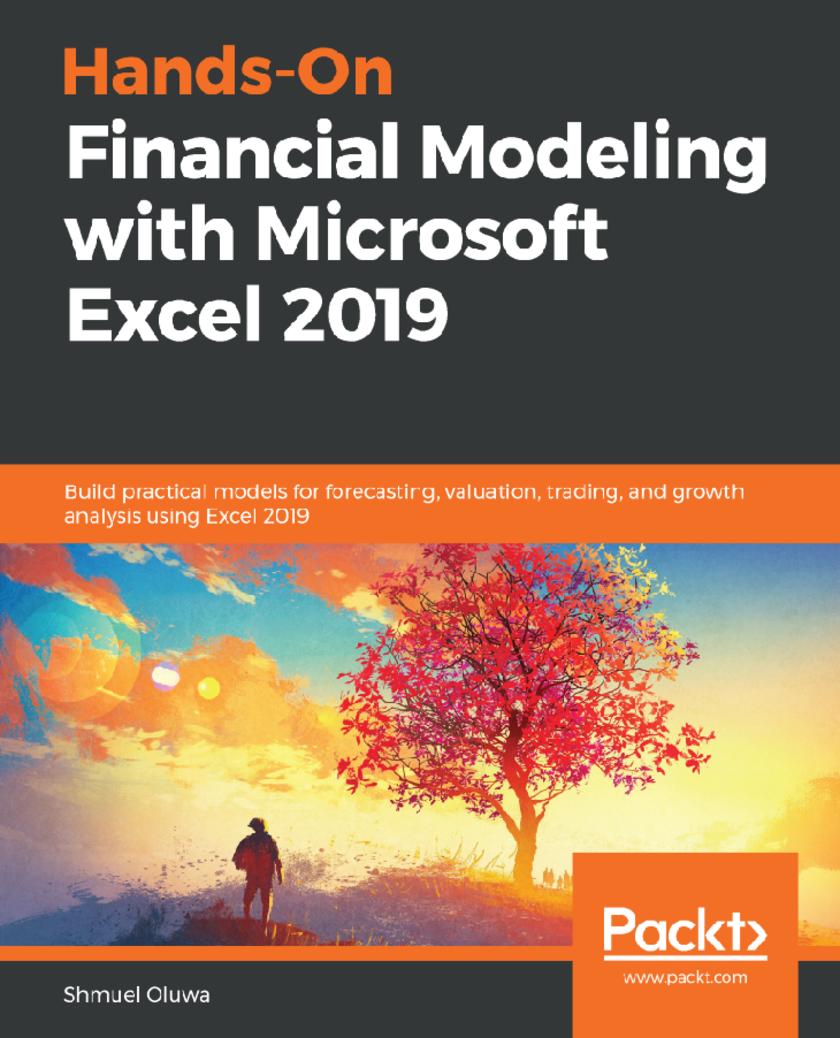
Hands-On Financial Modeling with Microsoft Excel 2019
¥62.12
Explore the aspects of financial modeling with the help of clear and easy-to-follow instructions and a variety of Excel features, functions, and productivity tips Key Features * A non data professionals guide to exploring Excel's financial functions and pivot tables * Learn to prepare various models for income and cash flow statements, and balance sheets * Learn to perform valuations and identify growth drivers with real-world case studies Book Description Financial modeling is a core skill required by anyone who wants to build a career in finance. Hands-On Financial Modeling with Microsoft Excel 2019 examines various definitions and relates them to the key features of financial modeling with the help of Excel. This book will help you understand financial modeling concepts using Excel, and provides you with an overview of the steps you should follow to build an integrated financial model. You will explore the design principles, functions, and techniques of building models in a practical manner. Starting with the key concepts of Excel, such as formulas and functions, you will learn about referencing frameworks and other advanced components of Excel for building financial models. Later chapters will help you understand your financial projects, build assumptions, and analyze historical data to develop data-driven models and functional growth drivers. The book takes an intuitive approach to model testing, along with best practices and practical use cases. By the end of this book, you will have examined the data from various use cases, and you will have the skills you need to build financial models to extract the information required to make informed business decisions. What you will learn * Identify the growth drivers derived from processing historical data in Excel * Use discounted cash flow (DCF) for efficient investment analysis * Build a financial model by projecting balance sheets, profit, and loss * Apply a Monte Carlo simulation to derive key assumptions for your financial model * Prepare detailed asset and debt schedule models in Excel * Discover the latest and advanced features of Excel 2019 * Calculate profitability ratios using various profit parameters Who this book is for This book is for data professionals, analysts, traders, business owners, and students, who want to implement and develop a high in-demand skill of financial modeling in their finance, analysis, trading, and valuation work. This book will also help individuals that have and don't have any experience in data and stats, to get started with building financial models. The book assumes working knowledge with Excel.
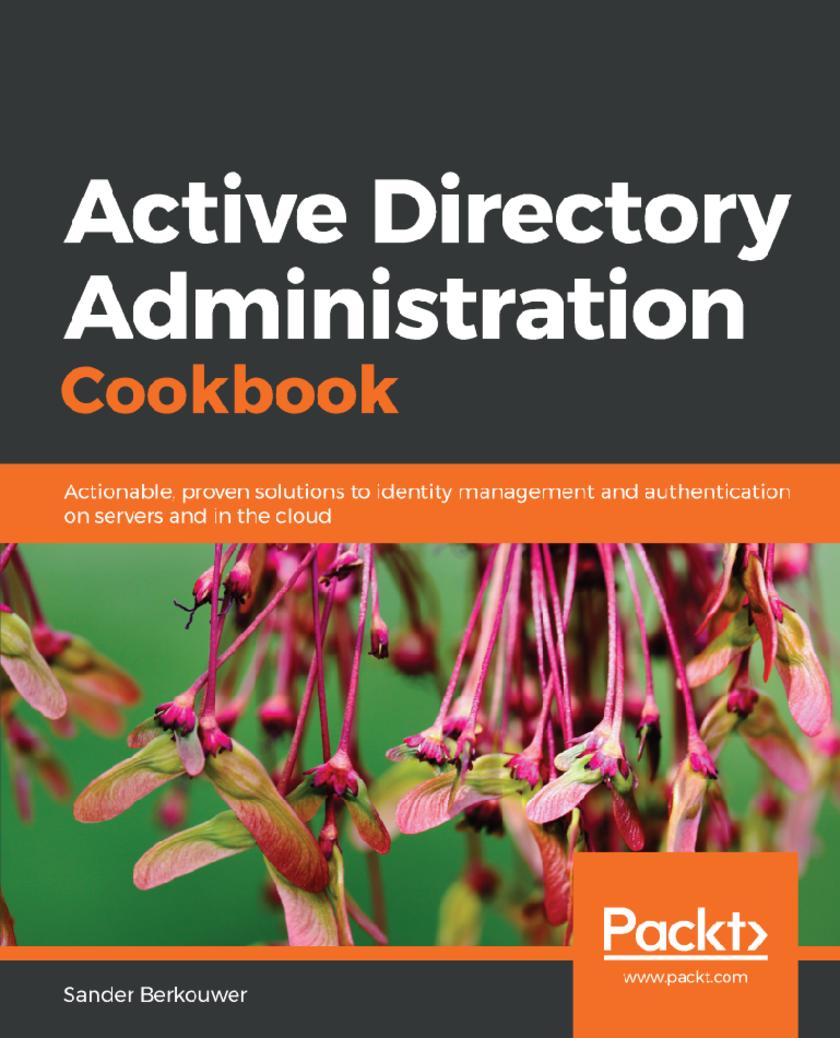
Active Directory Administration Cookbook
¥79.56
Learn the intricacies of managing Azure AD, Azure AD Connect as well as Active Directory for administration on cloud and Windows Server 2019 Key Features * Expert solutions for the federation, certificates, security, and monitoring with Active Directory * Explore Azure AD and AD Connect for effective administration on cloud * Automate security tasks using Active Directory and PowerShell Book Description Active Directory is an administration system for Windows administrators to automate network, security and access management tasks in the Windows infrastructure. This book starts off with a detailed focus on forests, domains, trusts, schemas and partitions. Next, you learn how to manage domain controllers, organizational units and the default containers. Going forward, you deep dive into managing Active Directory sites as well as identifying and solving replication problems. The next set of chapters covers the different components of Active Directory and discusses the management of users, groups and computers. You also go through recipes that help you manage your Active Directory domains, manage user and groups objects and computer accounts, expiring group memberships and group Managed Service Accounts with PowerShell. You learn how to work with Group Policy and how to get the most out of it. The last set of chapters covers federation, security and monitoring. You will also learn about Azure Active Directory and how to integrate on-premises Active Directory with Azure AD. You learn how Azure AD Connect synchronization works, which will help you manage Azure AD. By the end of the book, you have learned in detail about Active Directory and Azure AD, too. What you will learn * Manage new Active Directory features, such as the Recycle Bin, group Managed Service Accounts, and fine-grained password policies * Work with Active Directory from the command line and use Windows PowerShell to automate tasks * Create and remove forests, domains, and trusts * Create groups, modify group scope and type, and manage memberships * Delegate control, view and modify permissions * Optimize Active Directory and Azure AD in terms of security Who this book is for This book will cater to administrators of existing Active Directory Domain Services environments and/or Azure AD tenants, looking for guidance to optimize their day-to-day effectiveness. Basic networking and Windows Server Operating System knowledge would come in handy.
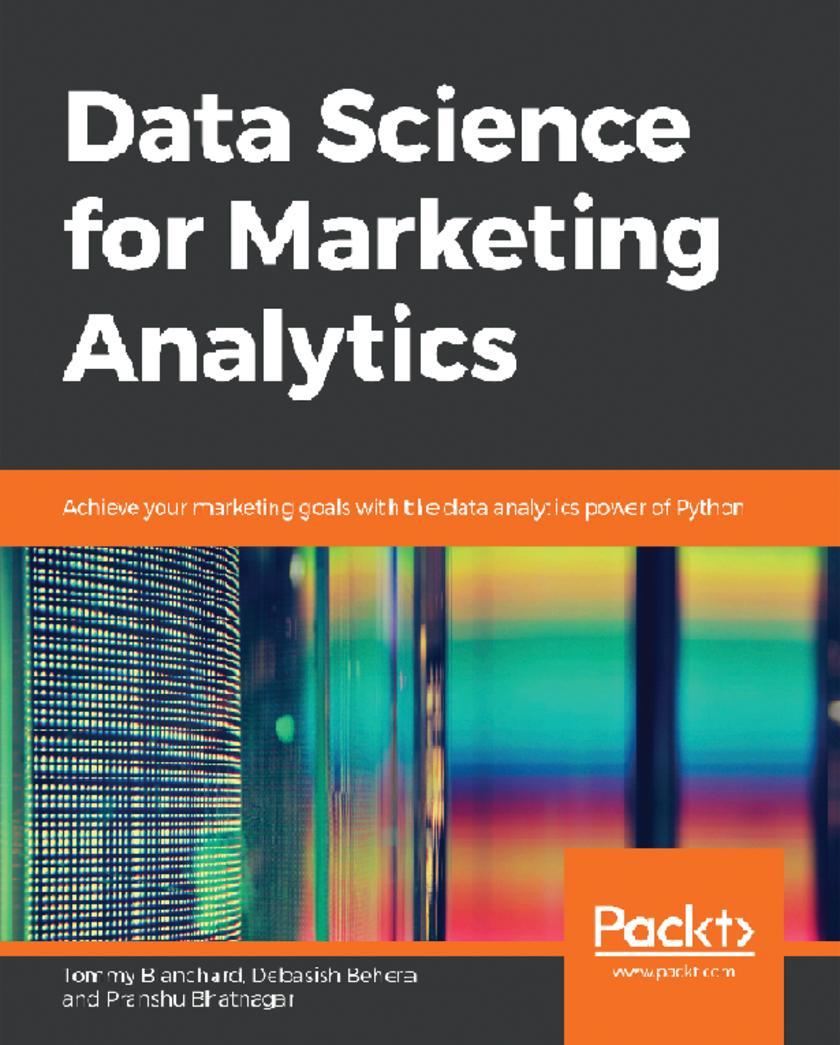
Data Science for Marketing Analytics
¥73.02
Explore new and more sophisticated tools that reduce your marketing analytics efforts and give you precise results Key Features * Study new techniques for marketing analytics * Explore uses of machine learning to power your marketing analyses * Work through each stage of data analytics with the help of multiple examples and exercises Book Description Data Science for Marketing Analytics covers every stage of data analytics, from working with a raw dataset to segmenting a population and modeling different parts of the population based on the segments. The book starts by teaching you how to use Python libraries, such as pandas and Matplotlib, to read data from Python, manipulate it, and create plots, using both categorical and continuous variables. Then, you'll learn how to segment a population into groups and use different clustering techniques to evaluate customer segmentation. As you make your way through the chapters, you'll explore ways to evaluate and select the best segmentation approach, and go on to create a linear regression model on customer value data to predict lifetime value. In the concluding chapters, you'll gain an understanding of regression techniques and tools for evaluating regression models, and explore ways to predict customer choice using classification algorithms. Finally, you'll apply these techniques to create a churn model for modeling customer product choices. By the end of this book, you will be able to build your own marketing reporting and interactive dashboard solutions. What you will learn * Analyze and visualize data in Python using pandas and Matplotlib * Study clustering techniques, such as hierarchical and k-means clustering * Create customer segments based on manipulated data * Predict customer lifetime value using linear regression * Use classification algorithms to understand customer choice * Optimize classification algorithms to extract maximal information Who this book is for Data Science for Marketing Analytics is designed for developers and marketing analysts looking to use new, more sophisticated tools in their marketing analytics efforts. It'll help if you have prior experience of coding in Python and knowledge of high school level mathematics. Some experience with databases, Excel, statistics, or Tableau is useful but not necessary.
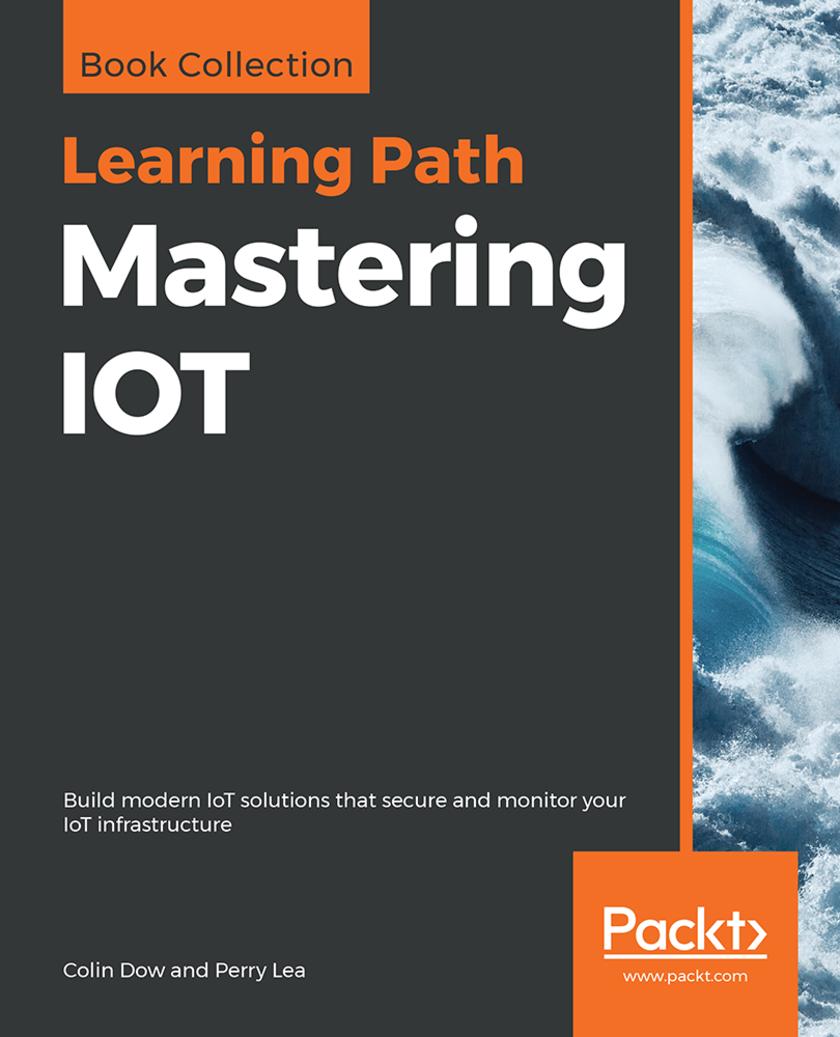
Mastering IOT
¥88.28
Leverage the full potential of IoT with the combination of Raspberry Pi 3 and Python and architect a complete IoT system that is the best fit for your organization Key Features * Build complex Python-based applications with IoT * Explore different concepts, technologies, and tradeoffs in the IoT architectural stack * Delve deep into each element of the IoT design—from sensors to the cloud Book Description The Internet of Things (IoT) is the fastest growing technology market. Industries are embracing IoT technologies to improve operational expenses, product life, and people's well-being. We’ll begin our journey with an introduction to Raspberry Pi and quickly jump right into Python programming. We’ll learn all concepts through multiple projects, and then reinforce our learnings by creating an IoT robot car. We’ll examine modern sensor systems and focus on what their power and functionality can bring to our system. We’ll also gain insight into cloud and fog architectures, including the OpenFog standards. The Learning Path will conclude by discussing three forms of prevalent attacks and ways to improve the security of our IoT infrastructure. By the end of this Learning Path, we will have traversed the entire spectrum of technologies needed to build a successful IoT system, and will have the confidence to build, secure, and monitor our IoT infrastructure. This Learning Path includes content from the following Packt products: * Internet of Things Programming Projects by Colin Dow * Internet of Things for Architects by Perry Lea What you will learn * Build a home security dashboard using an infrared motion detector * Receive data and display it with an actuator connected to the Raspberry Pi * Build an IoT robot car that is controlled via the Internet * Use IP-based communication to easily and quickly scale your system * Explore cloud protocols, such as Message Queue Telemetry Transport (MQTT) and CoAP * Secure communication with encryption forms, such as symmetric key Who this book is for This Learning Path is designed for developers, architects, and system designers who are interested in building exciting projects with Python by understanding the IoT ecosphere, various technologies, and tradeoffs. Technologists and technology managers who want to develop a broad view of IoT architecture, will also find this Learning Path useful. Prior programming knowledge of Python is a must.
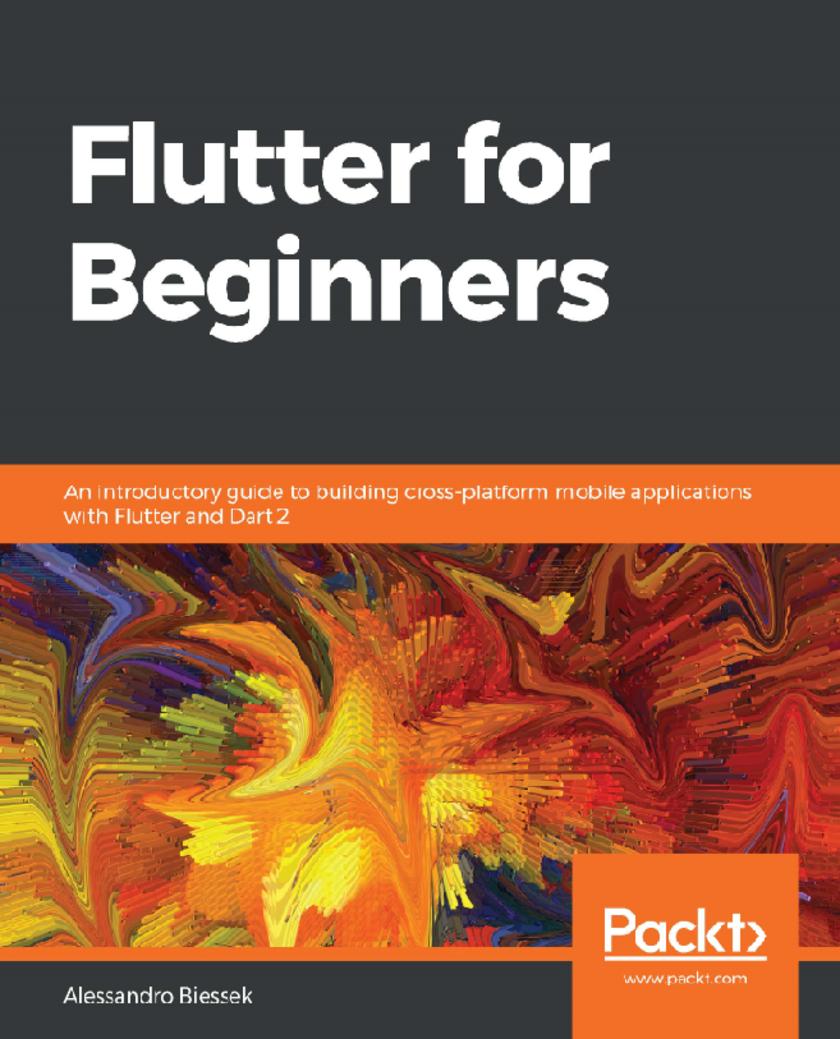
Flutter for Beginners
¥63.21
A step-by-step guide to learning Flutter and Dart 2 for creating Android and iOS mobile applications Key Features * Get up to speed with the basics of Dart programming and delve into Flutter development * Understand native SDK and third-party libraries for building Android and iOS applications using Flutter * Package and deploy your Flutter apps to achieve native-like performance Book Description Google Flutter is a cross-platform mobile platform that makes it easier to write secure and high-performance native apps for iOS and Android. This book begins by introducing you to the Flutter framework and basics of Dart. You’ll learn to set up the development environment to get started with your Flutter project. The book will guide you through designing the user interface and user input functions for your app. As you progress, you’ll explore the navigator widget to manage your app routes and understand how to add transitions between screens. You’ll then get to grips with developing your own plugin and discover how to structure good plugin code. The book will help you display a map from the Flutter app, add markers and interactions to it, and use the Google Places API. You’ll build on your knowledge by not only adding tests to create a bug-free app, but also preparing it for deployment on Apple's App Store and Google Play. In later chapters, you’ll learn to improve the user experience with advanced features such as map integrations, platform-specific code with native programming languages, and personalized animation options for designing intuitive UIs. By the end of this book, you’ll be well-versed with Dart programming and have the skills to develop your own mobile apps or build a career as a Dart and Flutter app developer. What you will learn * Understand the fundamentals of the Dart programming language * Explore the core concepts of the Flutter UI and how it compiles for multiple platforms * Develop Flutter plugins and widgets and understand how to structure good plugin code * Style your apps with widgets and learn the difference between stateful and stateless widgets * Add animation to your UI using Flutter's AnimatedBuilder component * Integrate your native code into your Flutter codebase for native app performance Who this book is for This book is for developers looking to learn Google's revolutionary framework, Flutter from scratch. No knowledge of Flutter or Dart is required. However, basic programming language knowledge will be helpful.




 购物车
购物车 个人中心
个人中心



